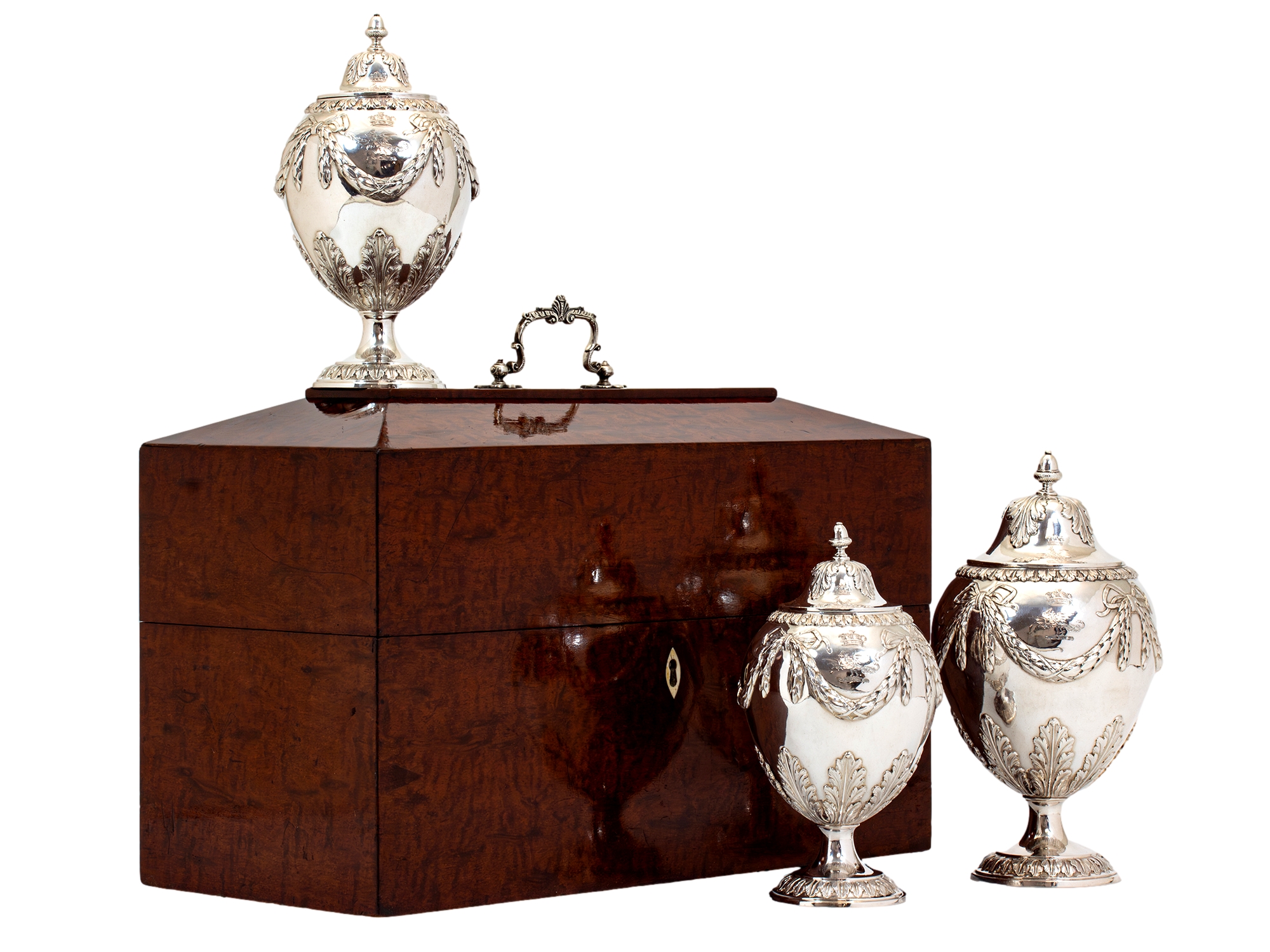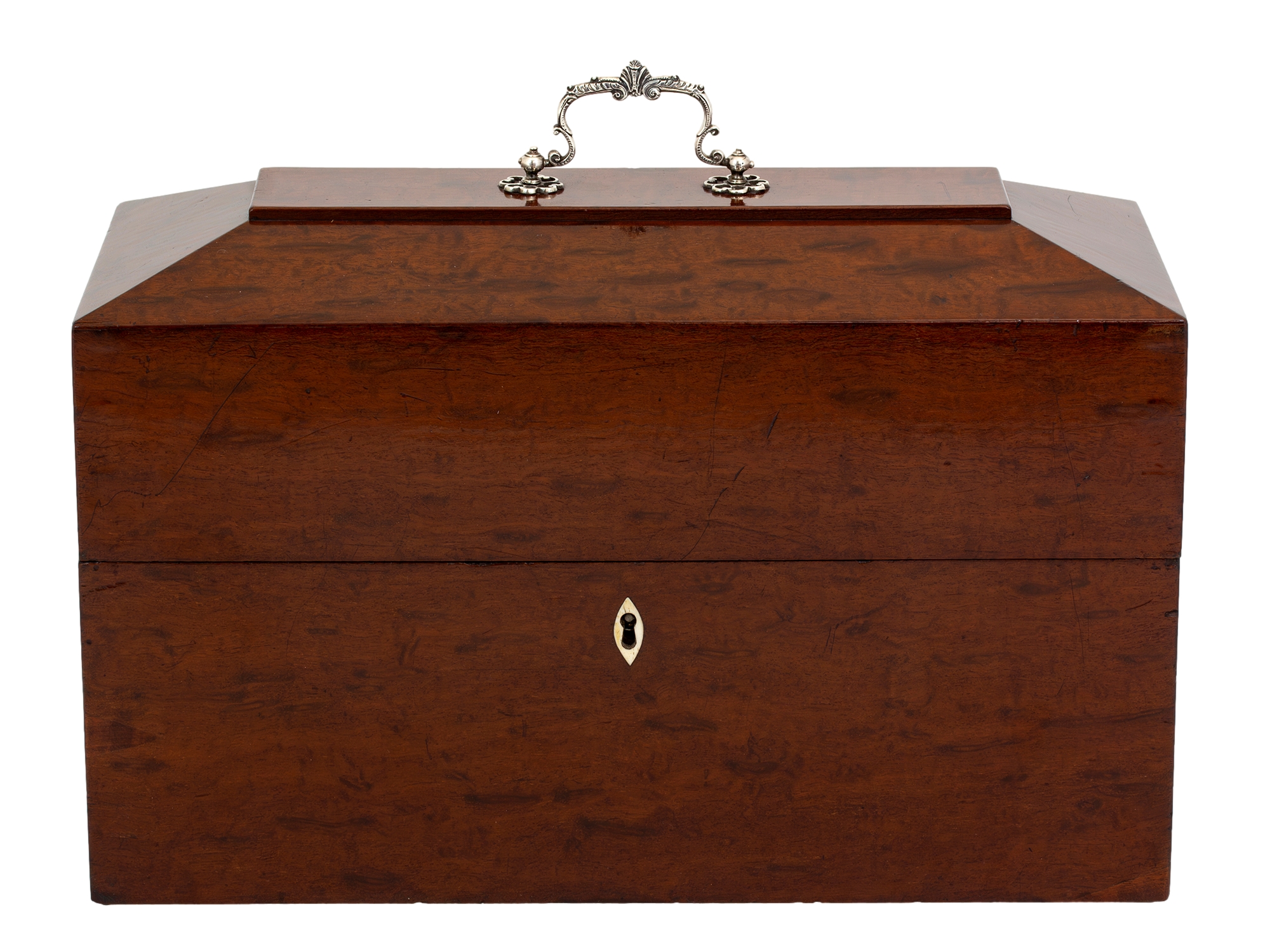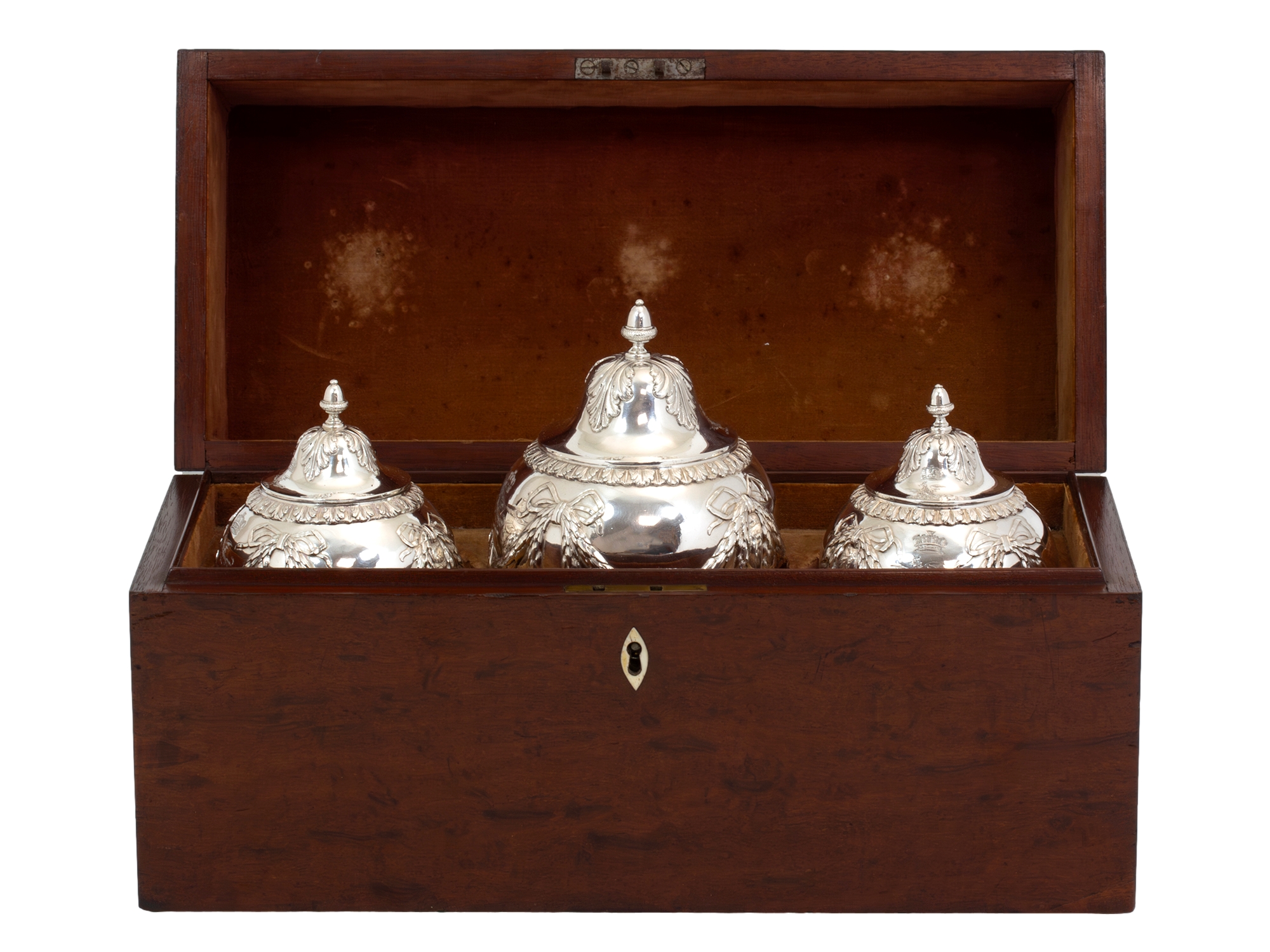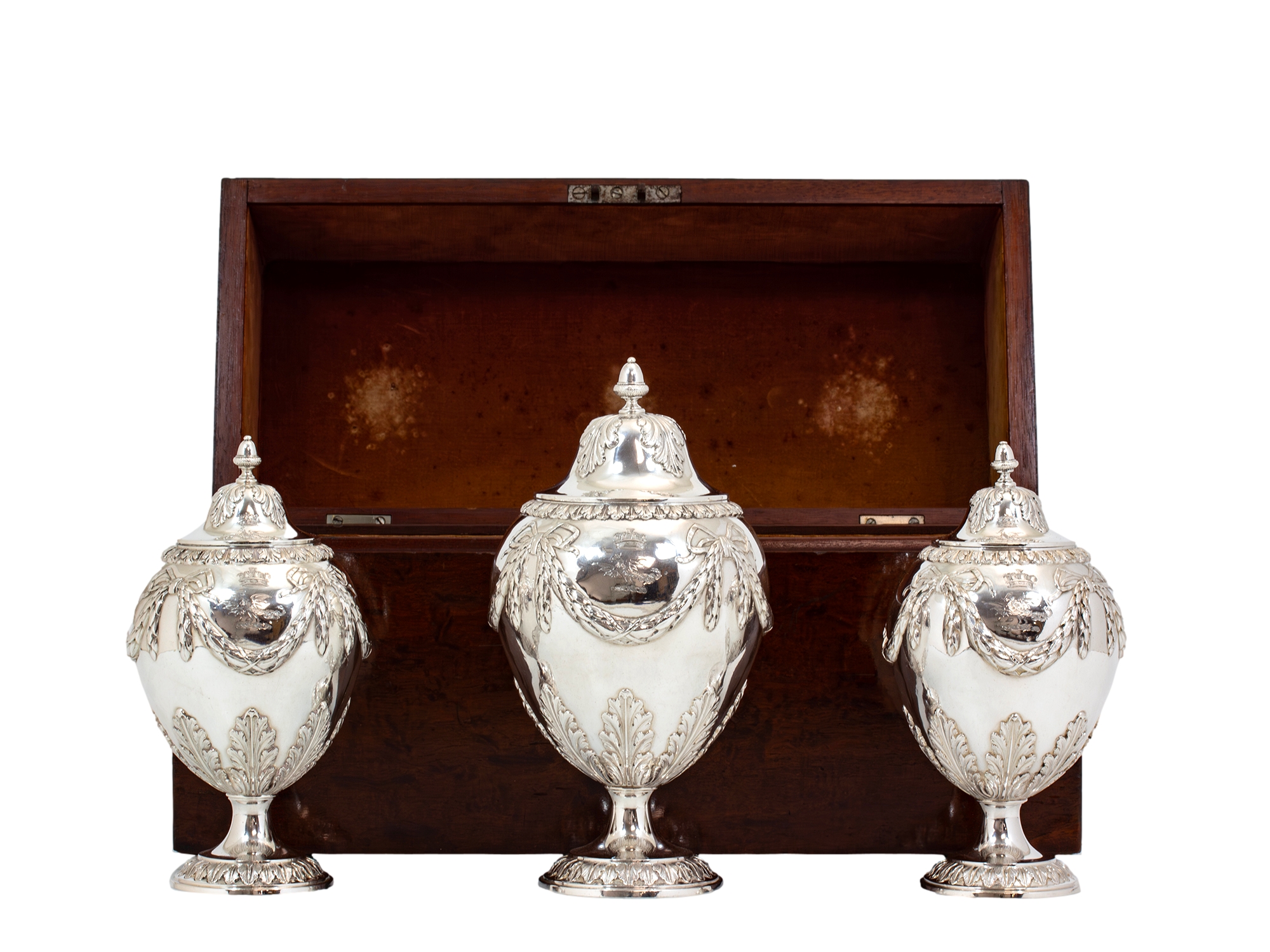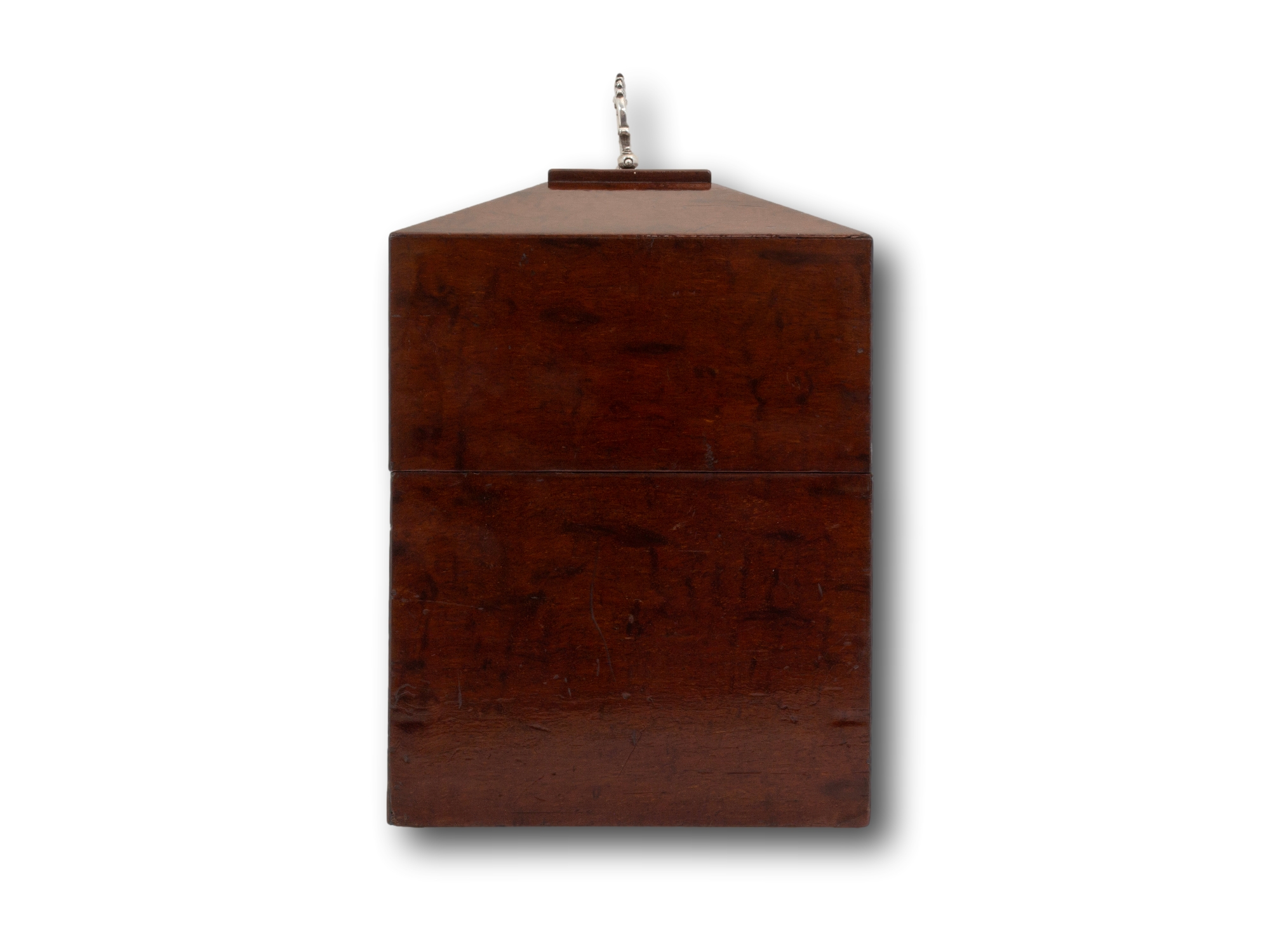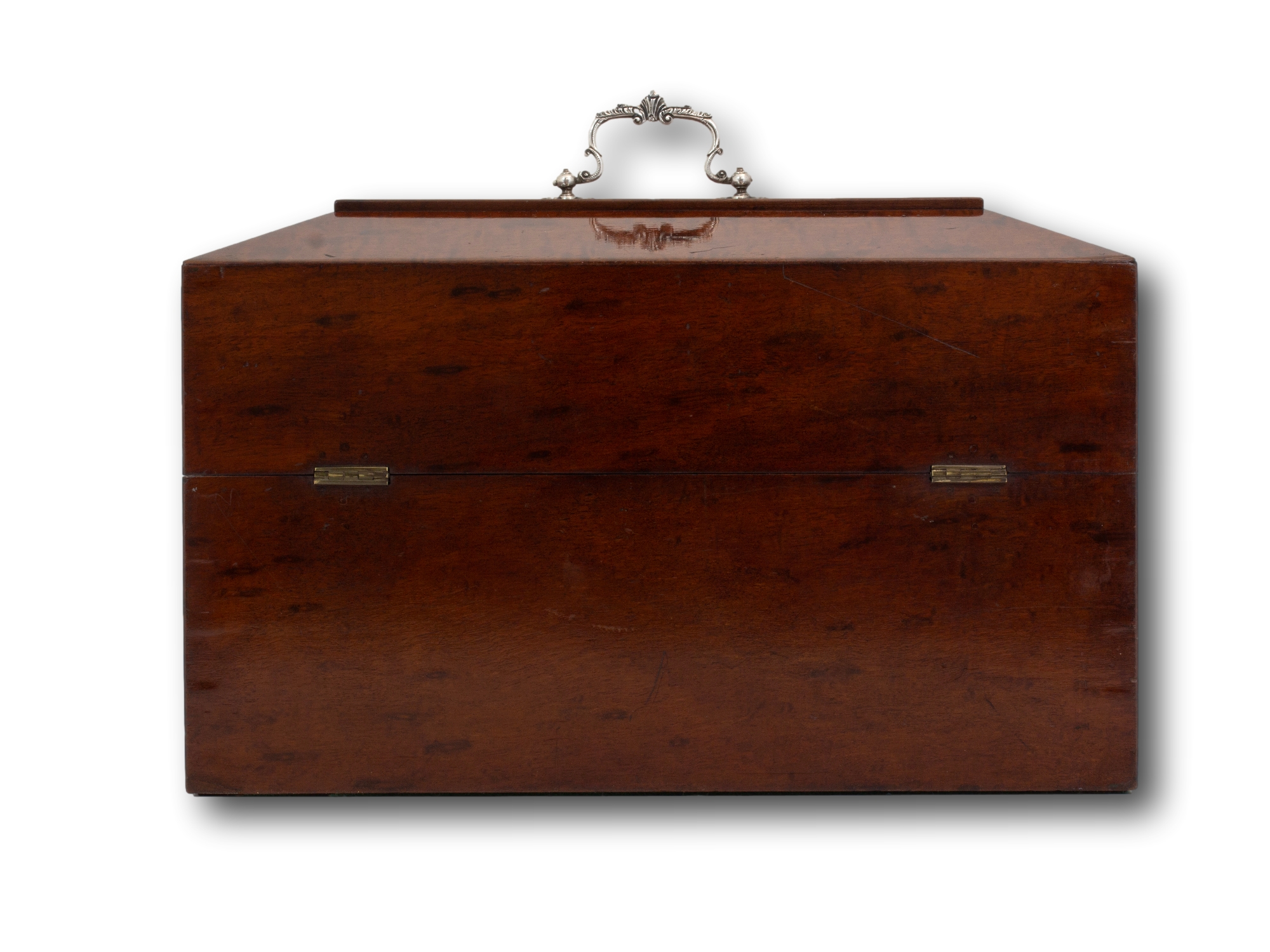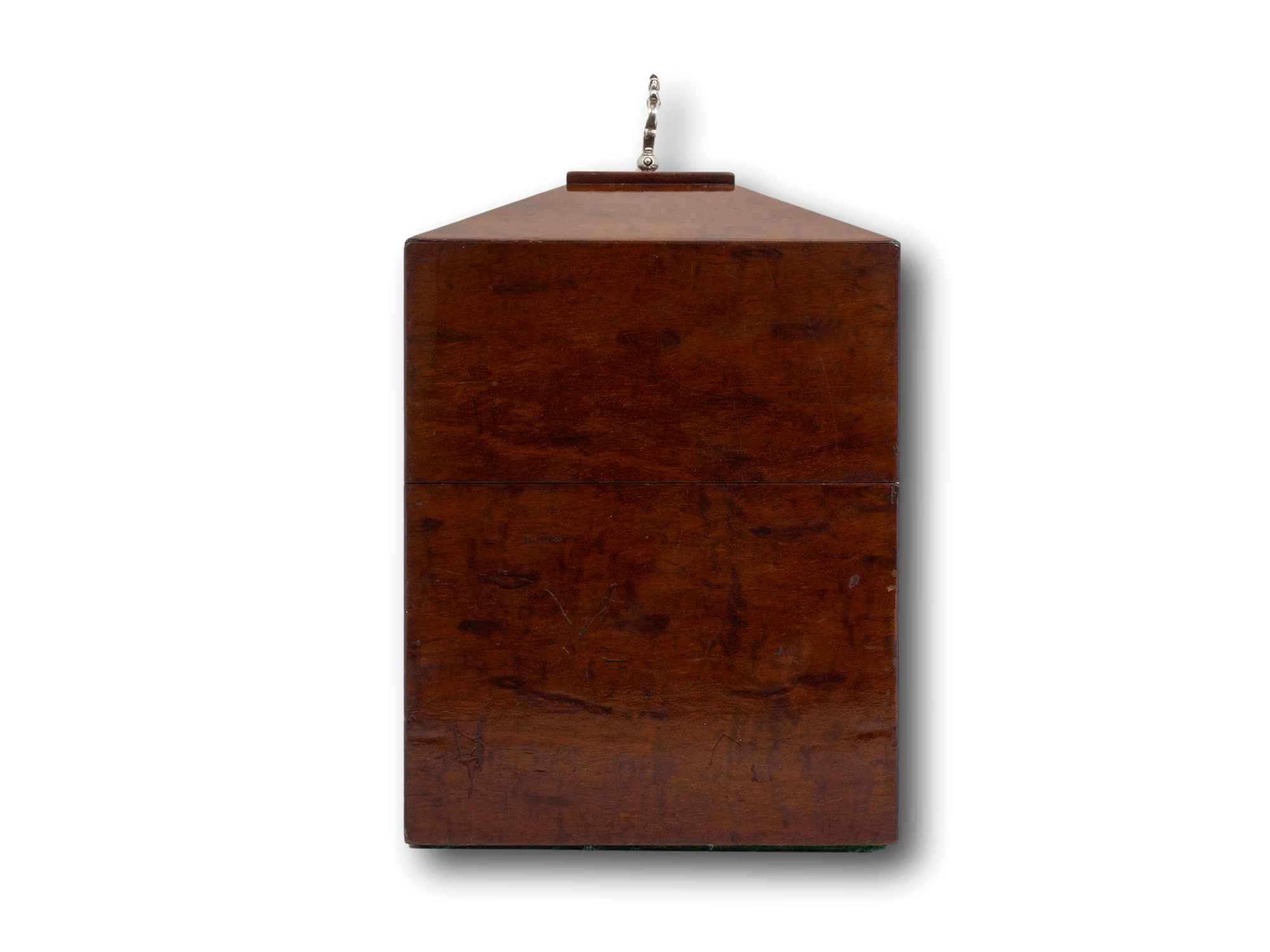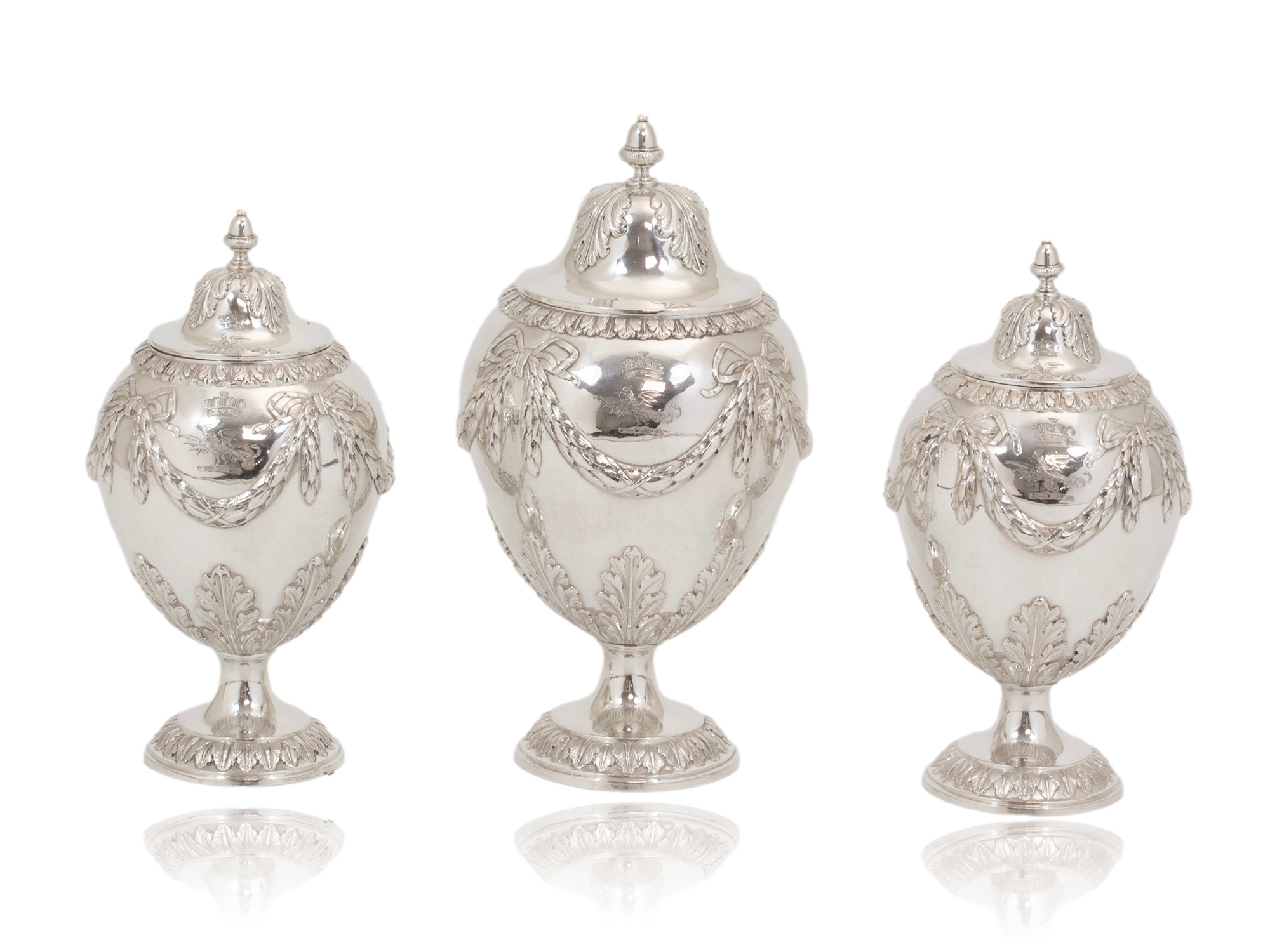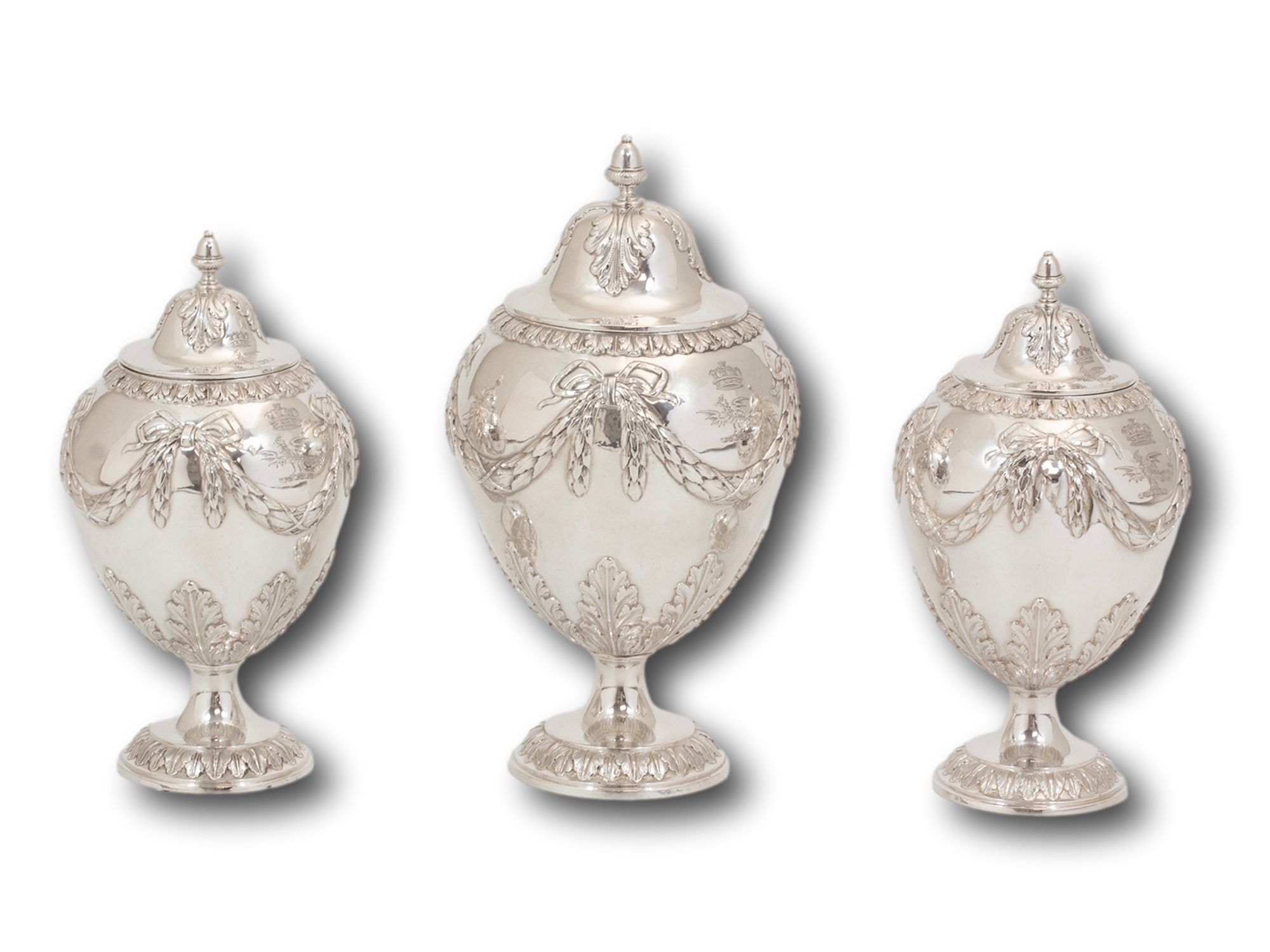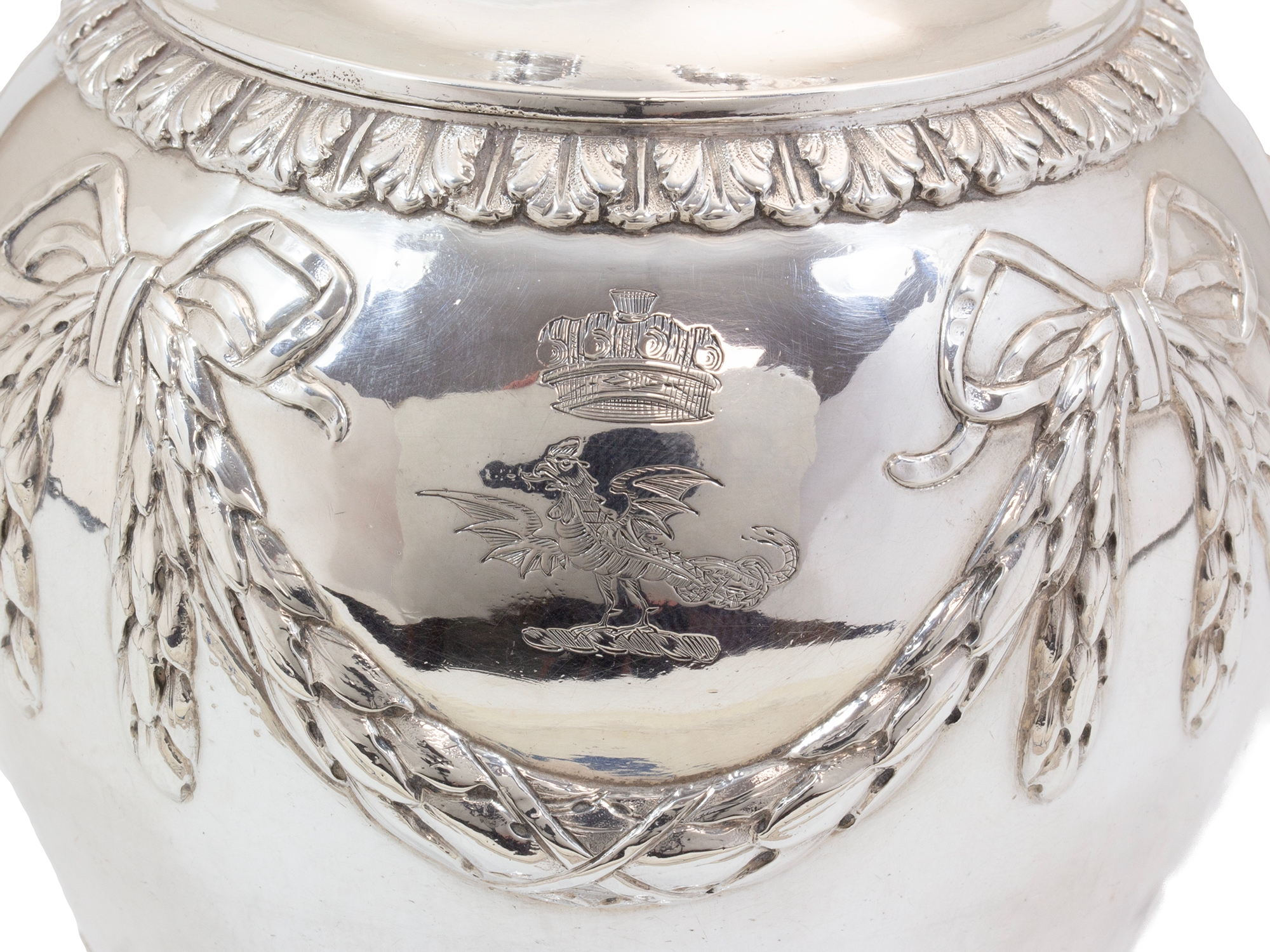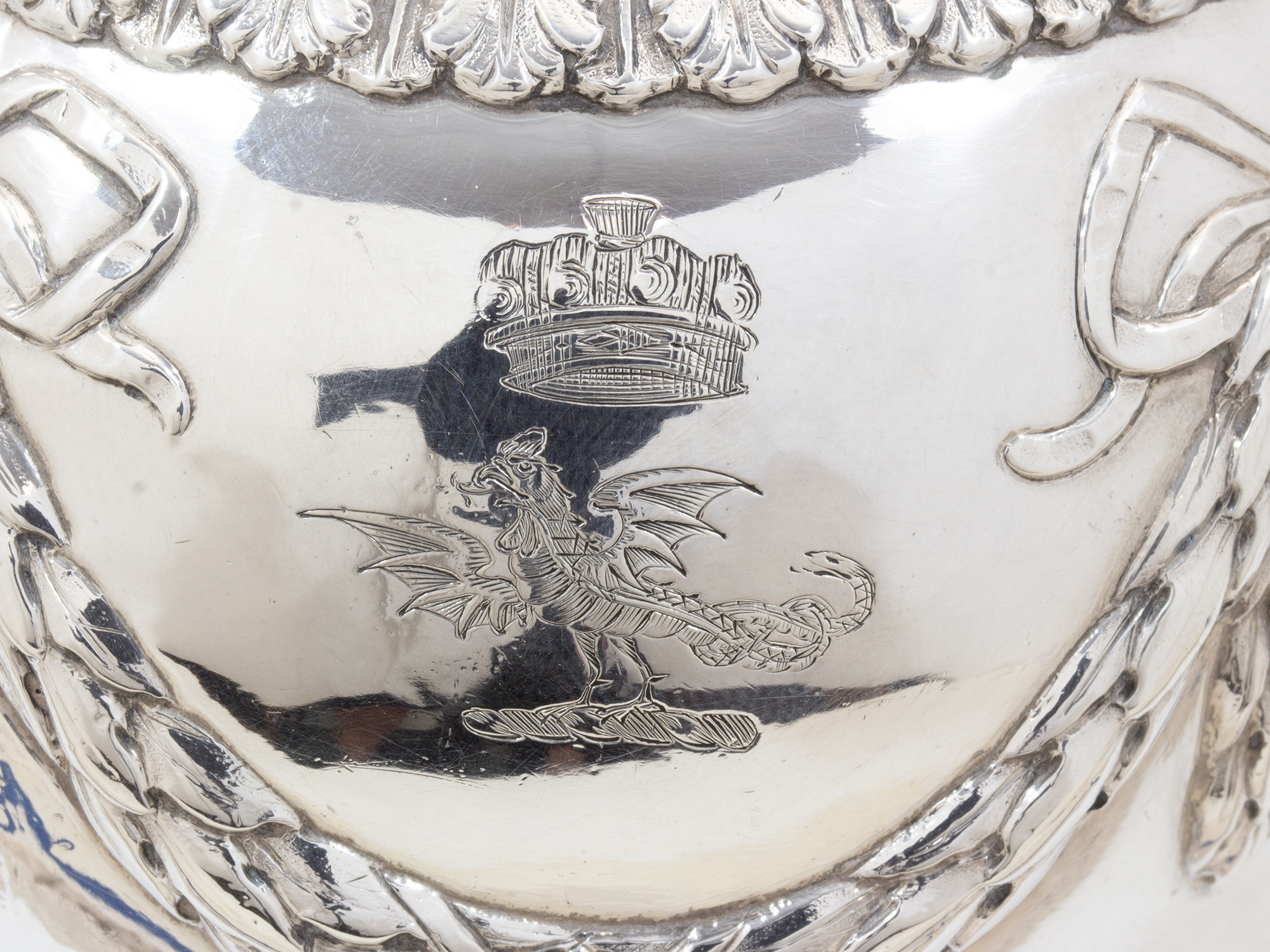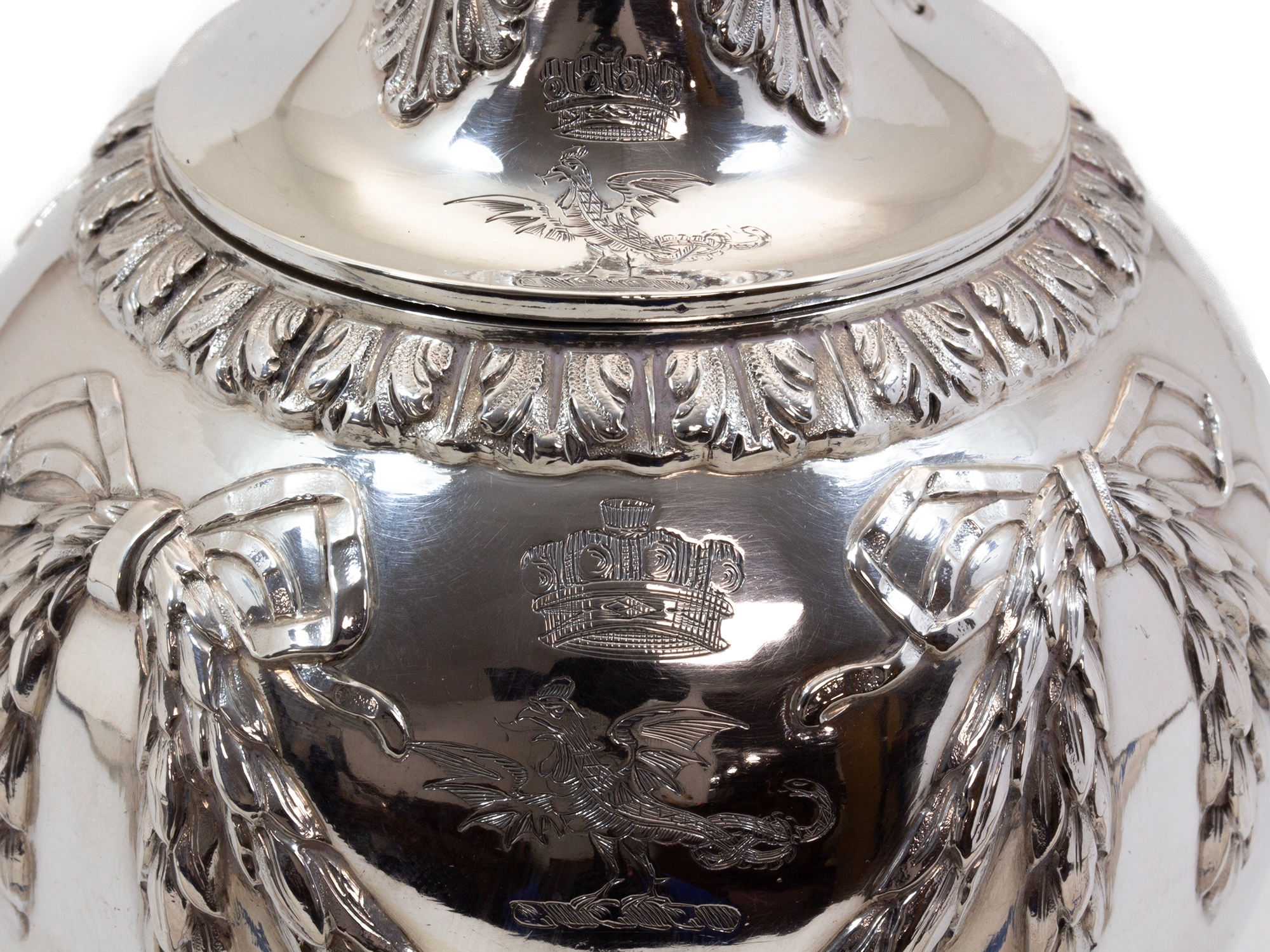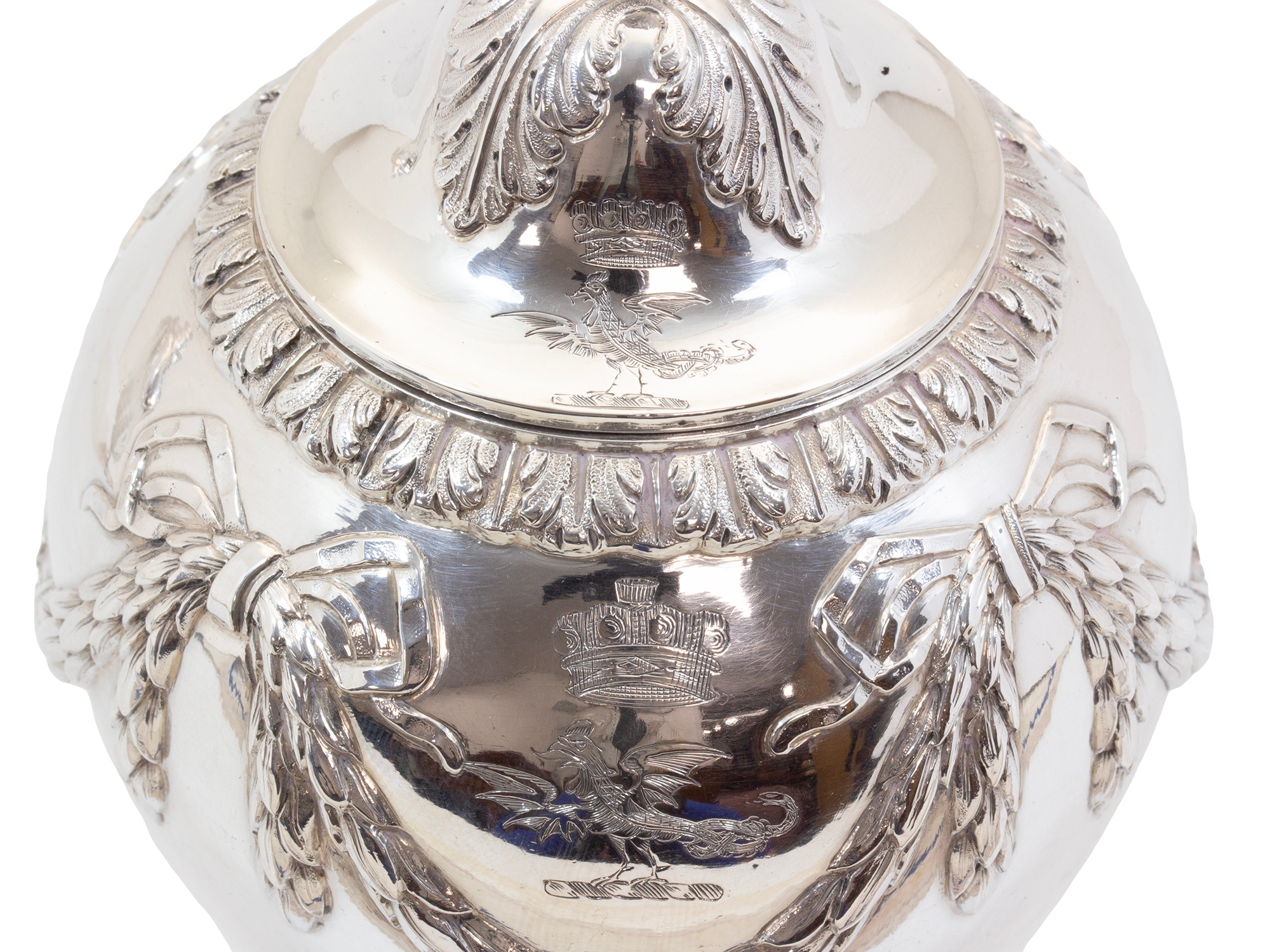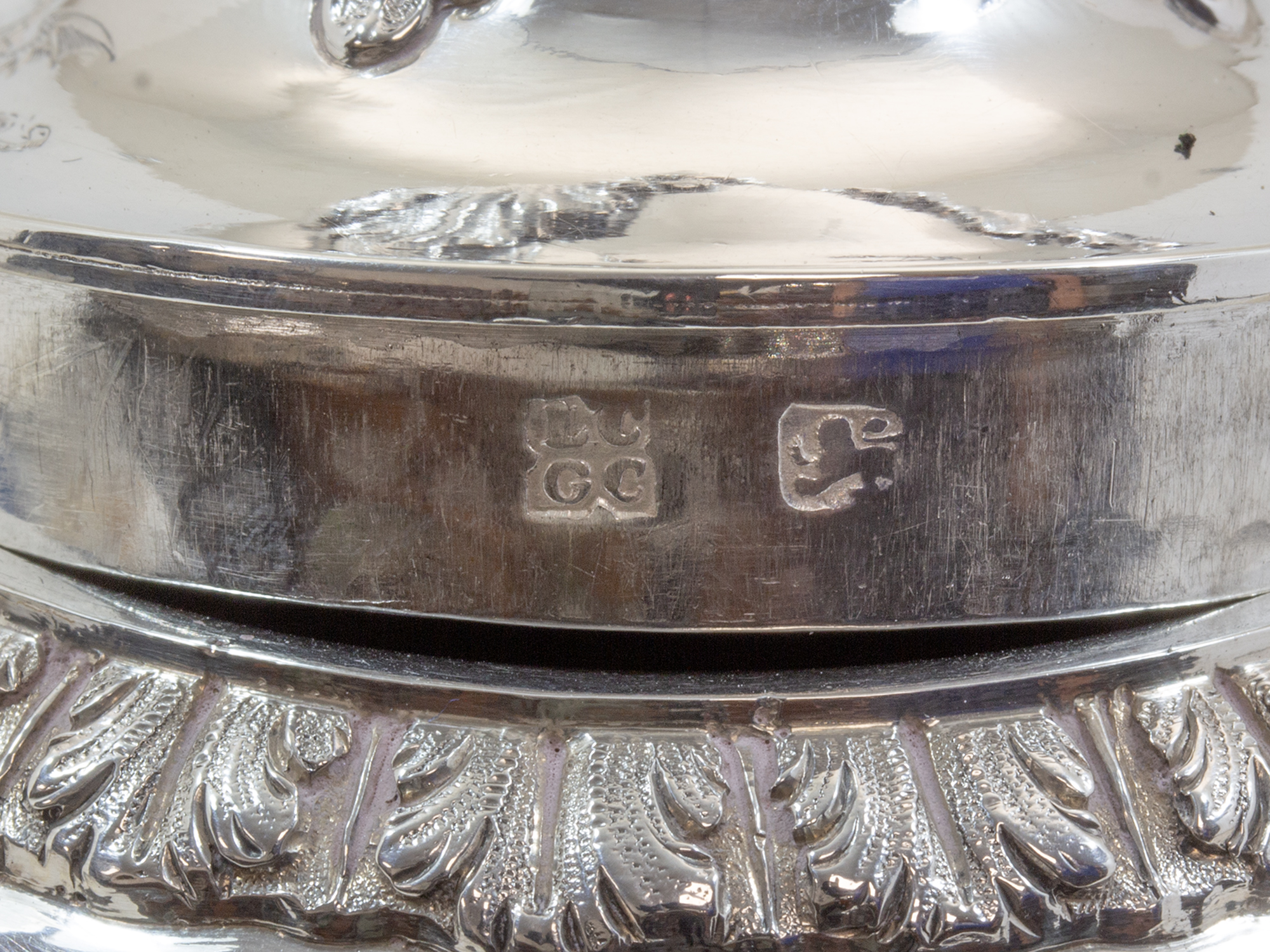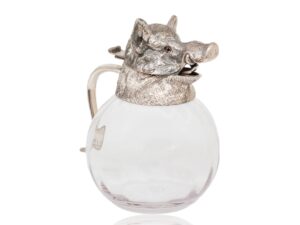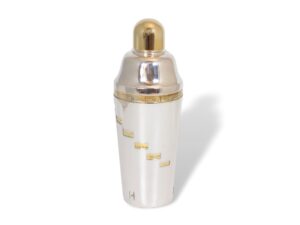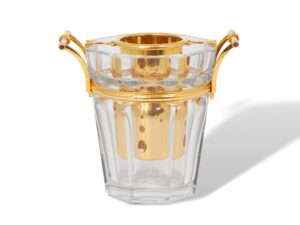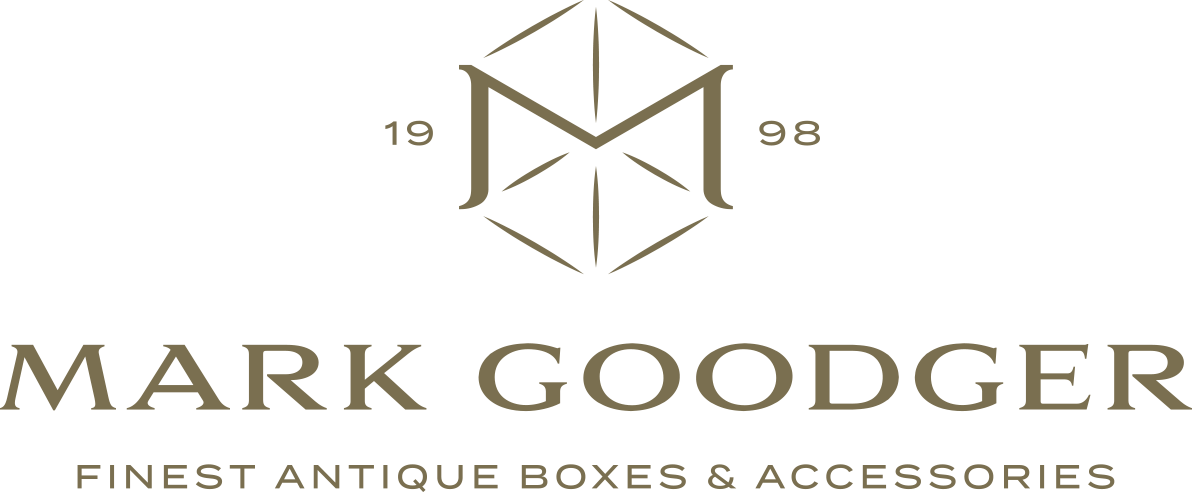Mahogany Tea Chest with Silver Tea Urns
SOLD
Housing Three Sterling Silver Urns From our Tea Caddy collection, we are thrilled to offer this remarkable Quarter Sawn Mahogany with Silver Tea Urns. The Tea Chest veneered in quarter-sawn Mahogany surmounted by a scrollwork silver handle and inlaid escutcheon.... Read More
Quarter Sawn Mahogany Tea Chest with Two Sterling Silver Tea Caddy Urns and a Single Sugar Bowl
| Dimensions | 37 × 17 × 23 cm |
|---|---|
| Country | |
| Literature | |
| Medium | |
| Period | |
| Year | |
| SKU | 501525 |
Description
Description
Housing Three Sterling Silver Urns
From our Tea Caddy collection, we are thrilled to offer this remarkable Quarter Sawn Mahogany with Silver Tea Urns. The Tea Chest veneered in quarter-sawn Mahogany surmounted by a scrollwork silver handle and inlaid escutcheon. The interior of the Tea Chest houses two sterling silver George III urn tea caddies and a central single sugar vase. Each of the urns are decorated beautifully with tied floral swags above foliage lappets with a flared foot and central crowned family crest depicting a dragon surmounted by acorn finials. Each of the silver pieces are hallmarked by the esteemed London Silversmith Louisa Perina Courtauld and George Cowles and dated to the second half of the 18th century during the reign of George III 1771.
Measurements (Inches) 9 x 14.6 x 6.7
Literature Mark Goodger 25th Anniversary Catalogue Page 27 and L. C. Hatfield, ‘A Set of English Silver Condiment Vases from Kedleston Hall’, M Bulletin, Museum of Fine Arts, Boston, 1981, vol. 79, pp. 13-14, n. 33.
Notes The crest is the ancient badge of the Curzon family, for Sir Nathaniel Curzon, 1st Baron Scarsdale (1726-1804). He married Caroline, eldest daughter of Charles, 2nd Earl of Portmore 1750. He was elevated to the peerage on 9 April 1761 as Baron Scarsdale.
These caddies were commissioned by Lord Scarsdale, for his Derbyshire seat Kedleston Hall, which he inherited in 1758, however, he had been planning its aggrandizement since his marriage eight years earlier. The style of these caddies reflects his passion for ‘the antique’, aptly demonstrated by a poem he recorded in his note-book, ‘Grant me ye Gods, a pleasant seat, in attick elegance made neat’. His philosophy greatly favoured the buildings of ancient Greece and Rome as inspiration for all elements of the house. Fittings and furnishings should also all be ‘enriched with decent ornament’.
Whilst he was to employ James Paine (1717-1789) as his architect, he continually sought advice from others such as Matthew Brettingham (d.1769), surveyor at Holkham Hall, Norfolk for Thomas Coke, 1st Earl of Leicester (d.1759), acknowledged as England’s ‘Apollo of the Arts’. Sir Nathaniel was also an early patron of James Stuart (1713-1788), following the latter’s return from studies in Greece and Italy; in 1757 the ‘Great Athenian’ provided designs for sideboard embellishments, such as a huge marble wine-cistern. However, it would be Robert Adam (1728-1799), who would complete and furnish the banqueting hall, dining room and other State rooms. His elegant sideboard drew admiration in 1766 from the formidable Duchess of Northumberland for its ‘vast quantity of handsome plate… which has a mightly pretty effect’. It is possible Adam influenced the design of these caddies, which take the form of Roman cinerary urns.
Louisa Courtauld and George Cowles also supplied Lord Scasdale with a set of condiment urns in 1771. Each takes the form of a Greek Lebes Gamikos vases in the celebrated collection of Sir William Hamilton (1730-1803), published in 1766 by Pierre François Hugues d’Hancarville in Collection of Etruscan, Greek and Roman Antiquities from the Cabinet of the Honorable William Hamilton. These highly ‘antique’ style urns, made the same year as these caddies, are identical in form, but not in decoration, to a set made by Courtauld and Cowles for Charles Birch (d.1780).
Provenance Sir Nathaniel Curzon, 1st Baron Scarsdale (1726-1804) of Kedleston, co. Derby, then by descent to, Richard Nathaniel Curzon, 2nd Viscount Scarsdale (1898-1977) of Kedleston, co. Derby. The Scarsdale Heirlooms; Christie’s, London, 16 July 1930, lot 64 (£54 to Goldsmiths and Silversmiths Company), John Pierpont Morgan Jr. (1867-1943) of New York.
The Estate of J. P. Morgan; Parke-Bernet Galleries, New York, 1 November 1947, lot 424. Anonymous sale; Sotheby’s, New York, 24 October 2000, lot 306.
Louisa Perina Courtauld (1729–1807) ran the silver business upon her husband Samuel’s death in 1765. After a couple of years on her own, she went into partnership with George Cowles, her late husband’s former apprentice.
Mahogany is the name given to many types of tropical hardwood and can be found in Africa, India and South America, most of which are a red-brown colour with a fine, even grain. This makes it easily workable and gives it a durable finish which attributes to its popularity with many kinds of furniture.
Sterling Silver is an alloy composed by weight of 92.5% silver and 7.5% other metals, usually copper. The sterling silver standard has a minimum millesimal fineness (parts per thousand) of 925.
With every purchase from Mark Goodger Antiques, you will receive our latest catalogue, a Certificate of Authenticity, detailed care instructions for your chosen piece and an independent invoice (for insurance purposes) will be enclosed. As well as being protected by a no-hassle, money-back policy, your piece will be entirely insured during the shipping process to ensure the safety of your item.
Additional information
Additional information
| Dimensions | 37 × 17 × 23 cm |
|---|---|
| Country | |
| Literature | |
| Medium | |
| Period | |
| Year | |
| SKU | 501525 |
